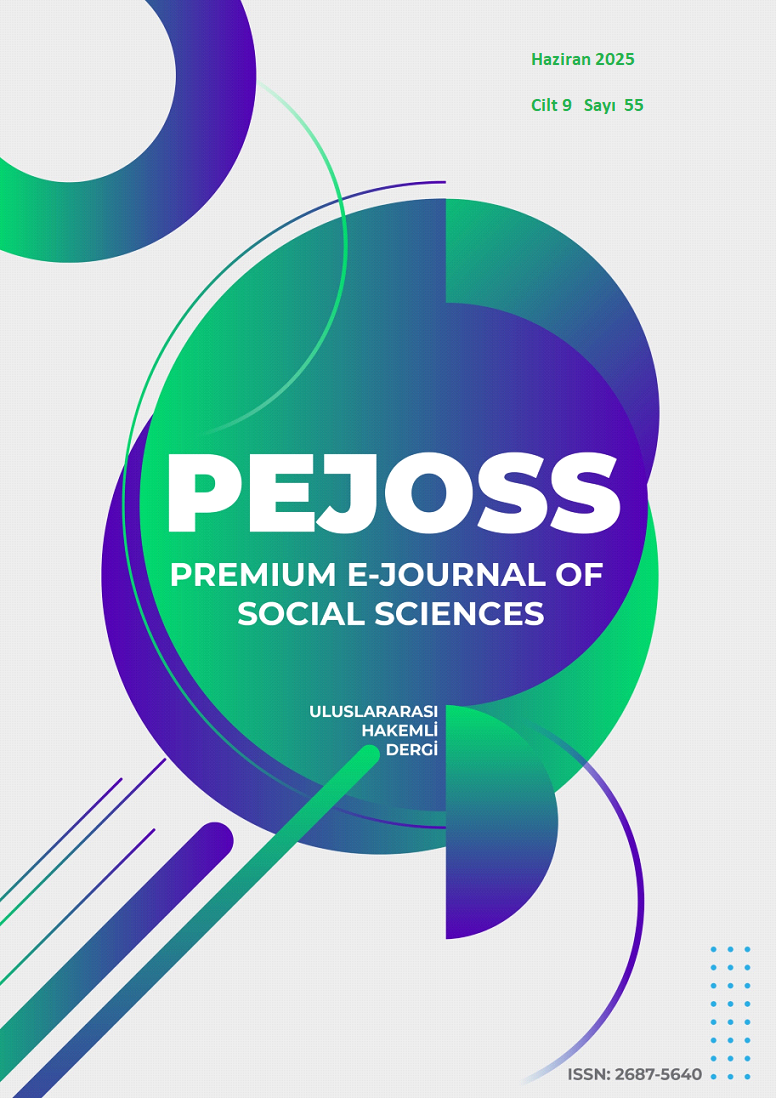Stigmatization and Employment Problems Among Formerly Incarcerated Individuals
DOI:
https://doi.org/10.5281/zenodo.15670595Keywords:
Damgalanma, Hükümlü, İstihdam, Tahliye Olmuş HükümlüAbstract
Stigmatization is a condition that negatively affects individuals' lives, causing them to face numerous problems both in their family life and in society. Individuals who are not favorably viewed in terms of social visibility—such as those with special needs or those who are convicted or formerly convicted—frequently encounter stigmatization. In such situations, individuals with special needs are often viewed with pity, while convicted or formerly convicted individuals are regarded with fear.
After prison, the main issues individuals face are stigmatization and employment-related problems. For individuals involved in crime to reintegrate into society and complete the rehabilitation process, employment is particularly important. Based on this, the purpose of this research is to examine the stigmatization and employment problems faced by formerly incarcerated men during their reintegration into society.
This study was conducted using the phenomenological method, a qualitative research approach. Semi-structured interviews were conducted with 15 formerly incarcerated men. The data were collected using the snowball sampling method, a form of purposive sampling. The obtained data were analyzed using content analysis with the help of the AI program Gemini 2.5 Pro, resulting in three main themes and nine subcategories.The findings of the study show that individuals experience multidimensional problems such as social exclusion, unemplyoyment, and uncertainty about the future after release. These problems pose risks that may lead individuals to reoffend. Based on the findings, it is recommended to implement vocational training courses for former convicts, create rehabilitation programs, and develop employment policies targeting formerly incarcerated individuals.
Downloads
References
Anazodo, K.S., Ricciardelli, R. & Chan, C. (2019), "Employment after incarceration: managing a socially stigmatized identity", Equality, Diversity and Inclusion, 38(5), 564-582. https://doi.org/10.1108/EDI-09-2018-0175
Goffman, E. (1963). Stigma: Notes on the management of spoiled identity. Prentice Hall.
Kara, T. (2014). Eski hükümlülerin istihdamında yaşanılan güçlükler ve İŞKUR’un bu konudaki rolü. Türkiye İş Kurumu Genel Müdürlüğü. https://media.iskur.gov.tr/15653/tufan-kara.pdf
Lipsey, M. W. & Cullen, F. T. (2007). The effectiveness of correctional rehabilitation: A review of systematic reviews. Annual Review of Law and Social Science, 3, 297–320. https://doi.org/10.1146/annurev.lawsocsci.3.081806.112833
Maruna, S. (2001). Making good: How ex-convicts reform and rebuild their lives. American Psychological Association. https://doi.org/10.1037/10430-000
Namal, M. K., Berke, M. & Çetinay, H. A. (2021). Eski hükümlü istihdamında karşılaşılan sorunlar ve çözüm önerileri. Yaşar Üniversitesi E-Dergisi, 16(63), 1338–1354. https://dergipark.org.tr/en/pub/jyasar/article/916740
Seyidoğlu, S. & Kızmaz, Z. (2024). Cezaevinden çıkan eski hükümlülerin suçu terk etmeleri üzerinde aile desteğinin önemi [The importance of family support on the desistance of the ex-convicts discharged from prison]. Ceza Hukuku ve Kriminoloji Dergisi, 12(1), 25–56. https://doi.org/10.26650/JPLC2024-1454049
Ward, T. & Stewart, C. (2003). The treatment of sex offenders: Risk management and good lives. Professional Psychology: Research and Practice, 34(4), 353–360. https://doi.org/10.1037/0735-7028.34.4.353
Downloads
Published
How to Cite
Issue
Section
License
Copyright (c) 2025 Premium e-Journal of Social Science (PEJOSS)

This work is licensed under a Creative Commons Attribution 4.0 International License.


